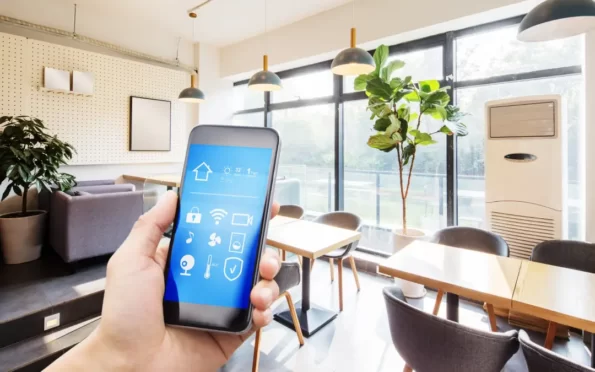In an era where technology is seamlessly woven into the fabric of our daily lives, ensuring the security of our homes and businesses has become paramount. With the advent of smart home technology, homeowners and businesses are leaning on innovative solutions to safeguard their properties. This smart home security guide will explore the essentials of securing your smart home, offering insights that will resonate with anyone looking to enhance their property's safety.

The Rise of Smart Home Technology
Smart home technology has seen a meteoric rise in recent years, transforming the way we interact with our living spaces. From automated lighting and climate control to advanced security systems, smart homes offer unparalleled convenience and efficiency. However, with these advancements come new challenges, particularly concerning security. Understanding the intricacies of smart home security is crucial for maximizing the benefits of these technologies while mitigating potential risks.
Understanding Smart Home Security
At its core, smart home security involves the integration of various devices and systems designed to protect your home from intruders, theft, and other security threats. These systems typically include smart locks, surveillance cameras, motion detectors, and alarm systems, all of which can be managed and monitored remotely via a smartphone or computer. By leveraging the power of the Internet of Things (IoT), smart home security systems offer real-time alerts and insights, allowing homeowners to respond swiftly to potential threats.
Key Components of a Smart Home Security System
A robust smart home security system comprises several critical components, each playing a vital role in ensuring comprehensive protection:
- Smart Locks: These provide keyless entry and can be controlled remotely, ensuring that only authorized individuals have access to your home.
- Surveillance Cameras: Modern cameras offer high-definition video, night vision, and motion detection, enabling constant monitoring of your property.
- Motion Detectors: These sensors detect unusual movements and trigger alerts or alarms, providing an additional layer of security.
- Alarm Systems: Integrated alarms can deter intruders and alert homeowners and authorities of any security breaches.
Enhancing Security with Smart Home Technology
To truly harness the power of smart home security, it's essential to implement best practices and strategies that enhance the effectiveness of these technologies. Here are some crucial tips to consider:
Regular Software Updates
One of the simplest yet most effective ways to maintain the security of your smart home devices is by ensuring that their software is regularly updated. Manufacturers frequently release updates to patch vulnerabilities and enhance the performance of their devices. By keeping your devices up to date, you can protect them from potential cyber threats.
Strong Passwords and Two-Factor Authentication
Security starts with strong passwords. Ensure that all your smart devices are protected with robust, unique passwords that are regularly changed. Additionally, enabling two-factor authentication provides an extra layer of security, making it more difficult for unauthorized individuals to access your systems.
Secure Your Network
Your smart home devices are only as secure as the network they're connected to. Protect your Wi-Fi network with a strong password and consider using a separate network for your smart devices. This separation can prevent potential hackers from gaining access to sensitive information stored on your primary network.
The Role of Professional Installation
While many smart home devices are designed for easy DIY installation, there's a significant advantage to enlisting the help of professionals. Expert installers can ensure that your devices are set up correctly and configured to maximize their security features. They can also provide valuable insights into optimizing your system for enhanced protection.
For more insights on getting started with smart home installations, you may refer to this beginner's guide.
Balancing Convenience and Security
One of the key challenges of smart home security is striking the right balance between convenience and security. While it's tempting to prioritize ease of use, it's essential to ensure that security features are not compromised. By carefully selecting and configuring devices, homeowners can enjoy the benefits of smart technology without sacrificing safety.
For those interested in learning more about how smart homes work, exploring topics such as the balance between convenience and security, can be insightful. You can find more information on this in this article.
Future Trends in Smart Home Security
As technology continues to evolve, so too will the landscape of smart home security. Emerging trends such as artificial intelligence, machine learning, and advanced biometrics are poised to revolutionize the way we protect our homes. By staying informed and adapting to these changes, homeowners can ensure that their properties remain secure in an ever-changing world.
For more affordable smart home ideas and innovations, you may explore this resource.

FAQs
What are the benefits of smart home security systems?
Smart home security systems offer real-time monitoring, remote access, and automated alerts, providing homeowners with peace of mind and enhanced protection.
How can I ensure my smart home devices are secure?
To secure your smart home devices, regularly update their software, use strong passwords, enable two-factor authentication, and secure your network with a strong password.
Is professional installation necessary for smart home security systems?
While not always necessary, professional installation can ensure that your devices are set up correctly and configured for optimal security, providing valuable peace of mind.

